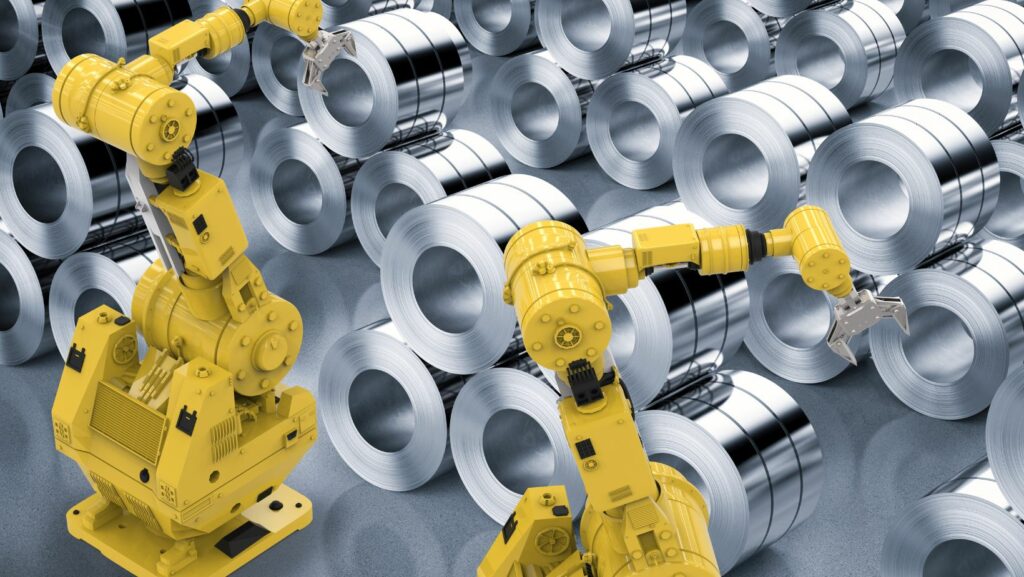Imagine a world where metals bend to your command and then morph from sheets of metal into intricate parts with zero tolerance. And this is not far from being a fantasy; it is a tangible reality of metal workers by hydraulic ironworkers. These smart and mighty machines offer the best alternative for a range of metal sheet work and allow the fabricators to readily accomplish the task with high accuracy and speed, thereby raising the productivity of the task.
Beyond the Basics: Understanding Ironworkers
Ironworkers come in two main varieties: Hydraulic and electric machines. Mechanical ironworkers operate using a manual input system, while hydraulic ironworkers depend on the hydraulic press for fast lifting and manipulation of the loads. In brief, it means more driving power, biting strength, and bent force than other cutting tools, which gives better performance work-wise in more segments of metalworking.
The Power of Precision: Punching with Accuracy
Precision takes the first place in metalworking. If your punch is not a perfect one, it simply won’t work. Hydraulic ironworkers distance themselves from others by their level of efficiency. They have adjustable stroke lengths, which regulate the depth of every blow so that the holes remain accurate and even. Additionally, the quick-change tooling system helps to rapidly change between various punches and dies, which results in reduced downtime and higher productivity. Hydraulic ironworkers provide an array of punch sizes and shapes that meet specific punching needs, such as making smooth round holes and complex geometric shapes.
Shearing Made Simple: Clean Cuts for Every Project
Clean and precise shearing is also an important part of metalworking. Hydraulic ironworkers eliminate the errors and dissatisfaction incurred by wrong cuts. They easily cut through materials with adjustable blade clearances as one of their features.

This provides for accurate control over the metal thickness, which is sheared – preventing material waste and making the edge clean and professional. The shearing force of hydraulic presses is another important advantage that they offer. These machines do heavy-duty fabrication tasks more efficiently than their mechanical counterparts because they can handle a wider range of metal thicknesses.
Bending to Your Will: Precise Bends for Unique Designs
The adaptability of hydraulic ironworkers goes beyond punching and shearing. These literate machines feature an impressive bender, allowing contractors to transform a piece of flat metal into a desired shape and form. To precisely shape them, angle iron, channel iron, and flat bars are among other commodities. The bending process is realized by utilizing the bending dies, which exert the pressure needed to bend the metal into a particular shape. They feature all kinds of shanked tools and measure units – these enable you to work on every corner and hole with great accuracy.
Beyond the Basics: Additional Features for Enhanced Fabrication
Modern state-of-the-art hydraulic ironworker machines are now equipped with many features that render them a perfect partner for ironworkers, making the job much easier. These machines help in speeding up the work, thereby improving overall efficiency. This brings about the hands-free operation through the foot pedals while still giving strong control to the machine, which is a major safety feature during metalwork. These integrated measuring devices are an ideal way to calibrate the punch, bend, and shear, which guarantees accuracy. Besides, light indicators present visual hints that process the machine’s operation and let workers streamline the process and prevent errors.
Choosing the Right Ironworker: A Guide for Fabricators
As you have a range of hydraulic ironworkers, choosing the correct machine for your specific requirements is critical. These various aspects involving the mass of eligible items to process, throat depth, cutability of different materials, and positioning of additional capabilities are only some among many. Tonnage capacity means the impact caused by the hammer used to hit the material of the sheet. To take the heavy sheet with a lot of ribs, you need to get a high tonnage capacity hammer of 300-400kg. Frame maximum height sets the distance to the bending station’s bending limit, i.e. list of metal segments you can work with. The material thickness capacity defines a range of metal thicknesses that the punch, shear, or bend of its different aspects can handle suitably. Wrap up by thinking of the specific entity you want to have. Is the machine for you meant to be too versatile or is the machine perfect for the job and has the right capabilities exposed to you?

In case anyone hasn’t decided yet which hydraulic ironworker to get, a good source of advice could be an experienced metalworking equipment supplier. They can offer you important information about the various kinds of machines that are available, their operation principles, and these specific characteristics that would fit your particular manufacturing projects can best match your fabrication projects.
Conclusion
Hydraulic ironworkers are a revolution to metal fabrication. Their ability to deliver pinpoint accuracy and the control of shape on the product side enable manufacturers to reach the subtlest nuances and shapes. Whether it is cutting an accurate way or making a unique hole, bending it into a desired shape, they all help in completing the task without wasting time and energy. In this aspect, these machines are undoubtedly superior to traditional methods. For this purpose, the hydraulic press can be an irreplaceable unit in your workshop if you are looking to upgrade the quality of metalworking and consistently produce results that are of professional level. In the transit of its power, precision, and the variable functions it possesses, it will be indispensable in your metal bending tasks.


More Stories
CanadaBit.AI Analysis: What Happens When AI Actually Makes Crypto Easier?
How Restful APIs Enhance OTT Platforms’ Capabilities and Improve User Experience in Streaming Services
Why B2B Brands Should Stop Chasing Perfection and Start Publishing